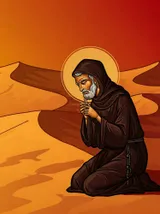What is the Feast of the Solemnity of the Blessed Virgin Mary (Mother of God)?
Chapter Text
The Solemnity of Mary, the Holy Mother of God is a feast day of the Blessed Virgin Mary under the aspect of her motherhood of Jesus Christ, whom she had circumcised on the eighth day after his birth according to Levitical Law. Christians see him as the Lord and Son of God.[1]
It is celebrated by the Roman Rite of the Catholic Church on 1 January, the Octave (8th) day of Christmas. This solemnity is a Holy Day of Obligation in areas that have not abrogated it. Christians of Byzantine,[2] West Syriac, and East Syriac Rites celebrate Mary as the Mother of God on 26 December (also known as the Synaxis of the Theotokos),[3] while the Coptic Church (an Oriental Orthodox church) does so on 16 January.
The Eastern Orthodox Church,[4][5] Traditional Catholics, Anglican Communion and the Lutheran Church observe the Feast of the Circumcision of Christ on 1 January.[6]
In the Western Rite Vicariate of the Antiochian Orthodox Church there is a feast of the Motherhood of the Blessed Virgin Mary on 11 October.[7]
Significance
The feast is a celebration of Mary being the mother of Jesus. The English title "Mother of God" is a literal translation of the Latin title Mater Dei, which in turn is a rendering of the Greek title Θεοτόκος (Theotokos), meaning "Bearer of God" dogmatically adopted by the First Council of Ephesus (431) as an assertion of the divinity of Christ.[8]
History
The Second Vatican Council stated: "Clearly from earliest times the Blessed Virgin is honoured under the title of Mother of God."[9] and at an early stage the Church in Rome celebrated on 1 January a feast that it called the anniversary (Natale) of the Mother of God.[3] When this was overshadowed by the feasts of the Annunciation and the Assumption, adopted from Constantinople at the start of the 7th century, 1 January began to be celebrated simply as the octave day of Christmas, the "eighth day" on which, according to Luke 2:21, the child was circumcised and given the name Jesus.[10]
In the 13th or 14th century, 1 January began to be celebrated in Rome, as already in Spain and Gaul, as the feast of the Circumcision of the Lord and the Octave of the Nativity, while still oriented towards Mary and Christmas,[10] with many prayers, antiphons and responsories glorifying the maternity of Mary.[3] Pope John XXIII's General Roman Calendar of 1960 removed the mention of the circumcision of Jesus and called 1 January simply the Octave of the Nativity.[11]
Mysterii Paschalis
The 1969 revision of the liturgical year and the calendar in the Roman Rite states: "1 January, the Octave Day of the Nativity of the Lord, is the Solemnity of Mary, the Holy Mother of God, and also the commemoration of the conferral of the Most Holy Name of Jesus."[18][19] It removed the 11 October feast, even for Portugal, stating: "The Maternity of the Blessed Virgin Mary is celebrated on 1 January in the Solemnity of Mary, the Mother of God."[20] The 11 October feast is celebrated by Traditionalist Catholic individuals and groups who mostly observe the General Roman Calendar of 1960.[21]
Marialis Cultus
In his Apostolic Letter Marialis Cultus, Pope Paul VI explained: "This celebration, placed on January 1 ...is meant to commemorate the part played by Mary in this mystery of salvation. It is meant also to exalt the singular dignity which this mystery brings to the 'holy Mother...through whom we were found worthy to receive the Author of life.' It is likewise a fitting occasion for renewing adoration of the newborn Prince of Peace, for listening once more to the glad tidings of the angels (cf. Lk. 2:14), and for imploring from God, through the Queen of Peace, the supreme gift of peace."[22]
source: https://en.wikipedia.org/wiki/Solemnity_of_Mary%2C_Mother_of_God
Quiz
Review the questions and verify your answers by clicking the tab.
Do all Christians celebrate the Feast of the Mother of God on the same day?
No. Roman Rite Catholics celebrate it on January 1. Eastern Rites celebrate it on December 26. And some Oriental Orthodox celebrate it on January 16.
What is the purpose of celebrating the Mother of God as a holy day?
This celebration honors Mary's role in the mystery of salvation and exalts the unique dignity bestowed upon the 'Holy Mother,' through whom we have been deemed worthy to receive the Author of life, Jesus Christ.
Was this feast always celebrated on January 1st?
No. January 1st was many different feasts. First, it was the Mother of God. Later it became the feast of the Circumcision of Christ. Later it simply became the Octave Day of Christmas. In 1969, it was changed back to the feast of the Mother of God.




